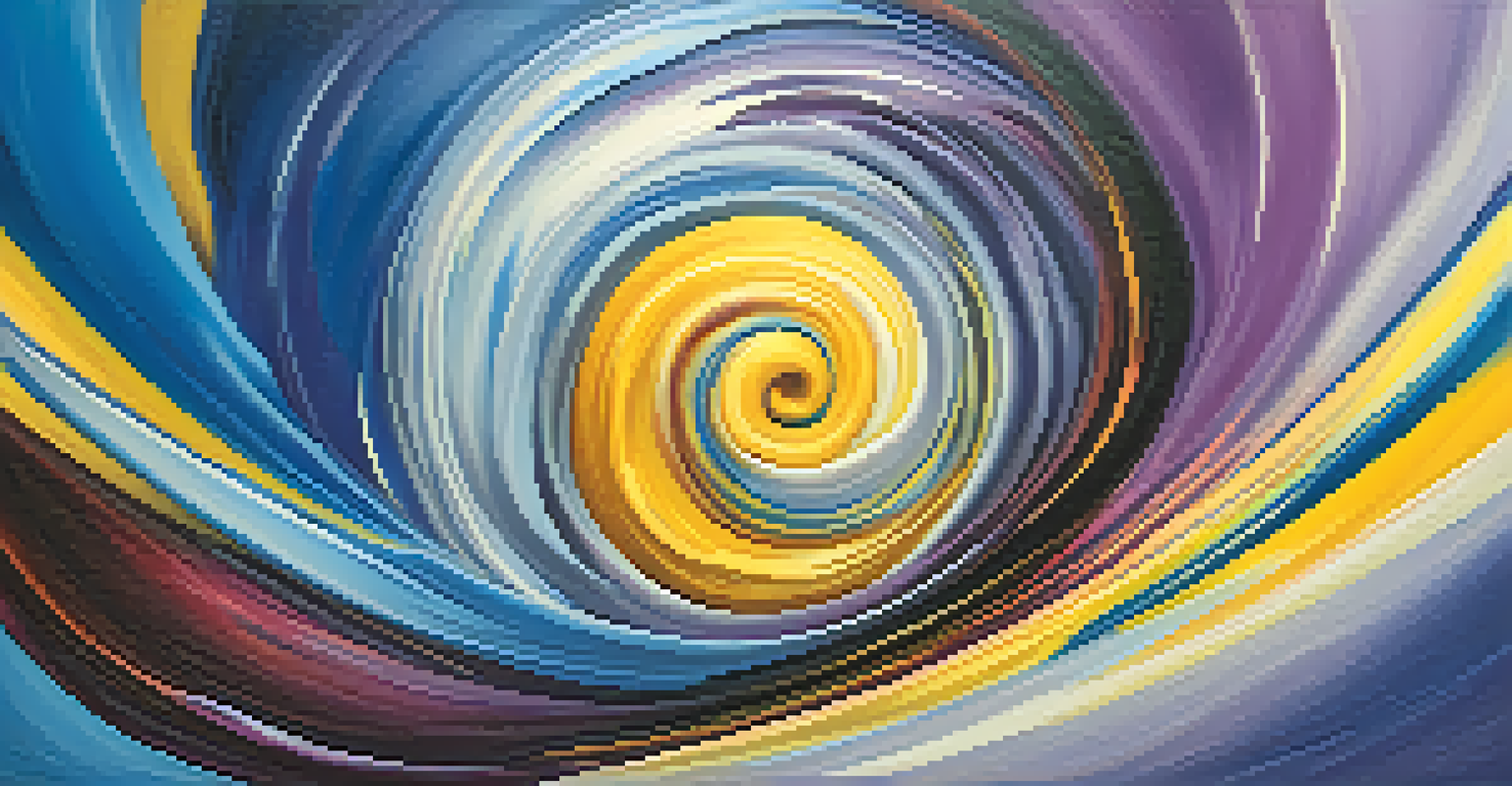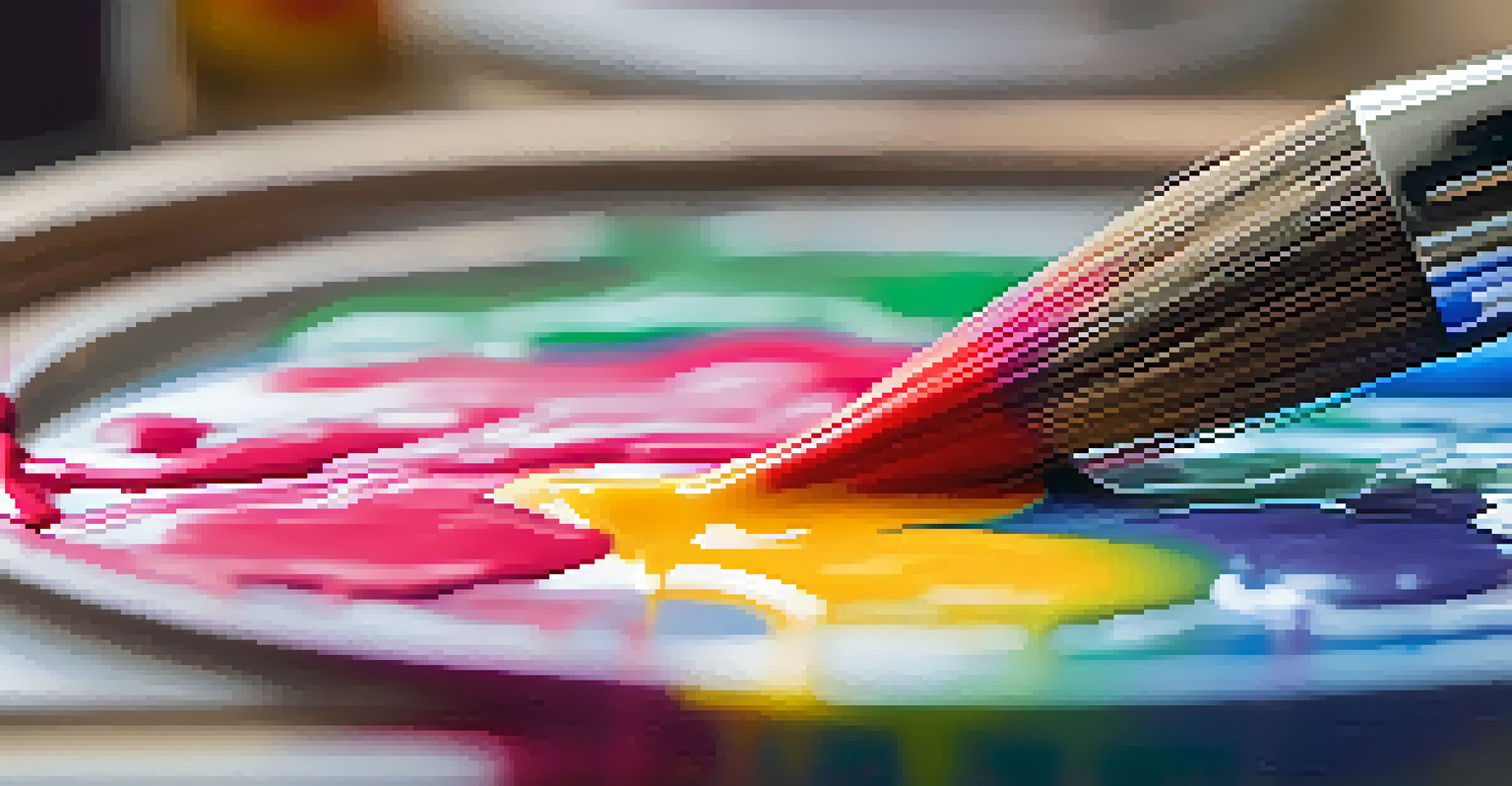Integrating Hallucinogens into Modern Art Therapy Practices

Understanding Hallucinogens and Their Effects
Hallucinogens are substances that alter perception, mood, and cognitive processes. Common examples include psilocybin, found in magic mushrooms, and LSD, which can lead to profound experiences. These substances have been used in various cultures for centuries, often in spiritual or therapeutic contexts.
Art is the most beautiful of all lies; it is a bridge to the truth.
In recent years, there's been a resurgence of interest in the potential therapeutic benefits of hallucinogens. Studies show that these substances can help reduce anxiety, depression, and PTSD symptoms, particularly when paired with guided therapeutic practices. This has led to a growing conversation about their inclusion in modern art therapy.
Art therapy, on the other hand, utilizes creative expression to help individuals process emotions and experiences. By integrating hallucinogens, therapists aim to deepen this creative process, potentially unlocking new pathways for healing and self-discovery.
The Intersection of Art Therapy and Psychedelics
Art therapy and psychedelics share a common goal: promoting healing through expression. Both aim to tap into the subconscious, allowing individuals to explore feelings that may be difficult to articulate. This synergy creates a unique environment for exploration and healing.

When individuals are under the influence of hallucinogens, they may experience altered states of consciousness, which can enhance creativity and emotional release. This heightened state can lead to breakthroughs in understanding personal struggles, facilitating deeper engagement with the art-making process.
Therapeutic Benefits of Hallucinogens
Hallucinogens have shown potential in alleviating symptoms of anxiety, depression, and PTSD, especially when integrated with guided therapy.
Therapists incorporating psychedelics into art therapy often guide their clients through the experience, ensuring safety and providing support. This combination not only fosters creativity but also helps clients integrate their experiences into their everyday lives.
Benefits of Using Hallucinogens in Art Therapy
One significant benefit of integrating hallucinogens into art therapy is the potential for profound emotional release. Clients may find it easier to confront deeply buried emotions, leading to cathartic moments during art-making. This emotional engagement can enhance the therapeutic process.
Psychedelics can help us to see the world as it really is, stripped of our habitual perceptions and judgments.
Moreover, hallucinogens can foster a sense of connection, both to oneself and to others. Participants often report feeling more in tune with their surroundings and more empathetic towards others, creating a supportive communal atmosphere during sessions. This sense of unity can be incredibly beneficial for those struggling with isolation.
Additionally, the creative process can be amplified under the influence of hallucinogens, allowing clients to explore new artistic avenues. This can result in artwork that is not only expressive but also rich in imagery and symbolism, providing insights into their psyche.
Challenges and Considerations in Practice
While the integration of hallucinogens into art therapy shows promise, it is not without challenges. Legal restrictions surrounding the use of these substances can vary significantly, making it difficult for therapists to navigate the landscape. This can pose barriers to research and widespread adoption in therapeutic settings.
Additionally, not everyone is a suitable candidate for psychedelic-assisted therapy. Individuals with certain mental health conditions, such as schizophrenia, may experience adverse effects. Therapists must conduct thorough assessments to ensure that clients are appropriate for this type of treatment.
Art Therapy Enhances Self-Discovery
Combining hallucinogens with art therapy allows clients to explore deep emotions and enhance creativity, leading to significant breakthroughs.
Furthermore, creating a safe and supportive environment is crucial when working with hallucinogens. Therapists need to be well-trained in both art therapy and the effects of the substances they are using to provide the best possible care and to guide clients through their experiences.
Case Studies and Success Stories
Several case studies highlight the positive impact of integrating hallucinogens into art therapy. For instance, some clients with PTSD have reported significant reductions in symptoms after participating in guided sessions that included both psychedelics and art-making. These stories showcase the potential for transformative healing.
In one notable case, a client struggling with grief was able to create a series of paintings that vividly expressed their emotions. The use of psilocybin allowed them to confront feelings they had been avoiding, leading to breakthroughs in their healing journey. This underscores the power of combining these modalities.
Such success stories not only inspire hope but also encourage further exploration in this field. They highlight the need for more research and the importance of sharing experiences that can shed light on the benefits of this innovative approach to therapy.
The Future of Hallucinogens in Therapy
As research into the therapeutic benefits of hallucinogens continues to grow, so too does interest in their application within art therapy. The potential for these substances to catalyze healing and creativity is attracting attention from both therapists and clients alike. This could lead to a new era of therapeutic practices.
With increasing legalization and acceptance of certain psychedelics, we may see more structured programs developing around their use in art therapy. This could provide clients with safe, guided experiences that harness the power of both creativity and altered states of consciousness.
Challenges in Psychedelic Therapy
Legal restrictions and client suitability pose challenges for therapists looking to incorporate hallucinogens into their therapeutic practices.
Ultimately, the future of hallucinogens in therapy holds immense potential for those seeking healing through art. As we continue to learn and adapt, the integration of these substances may redefine the landscape of mental health treatment.
Conclusion: Embracing New Approaches to Healing
Integrating hallucinogens into modern art therapy practices offers a fresh perspective on healing. By combining the emotional depth of art-making with the transformative potential of psychedelics, therapists can create unique experiences for their clients. This approach encourages exploration, expression, and ultimately, healing.
However, it's essential to approach this integration with caution and respect for the substances involved. Ongoing research, ethical considerations, and a commitment to client safety will be key in shaping the future of this innovative therapeutic practice.

As we embrace new approaches to healing, the conversation around hallucinogens and art therapy continues to evolve. With an open mind and a focus on the well-being of individuals, we can explore the vast possibilities that lie ahead in the intersection of creativity and consciousness.